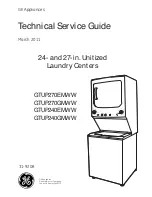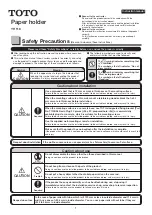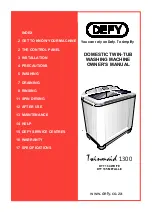
iSocket
®
GSM 706/707
www.isocket.eu
© Copyright Intellectronics 2012
All rights reserved. Version 1.1.2-EN
- 7 -
English
Safety Instructions for the Battery
The "707" models use a Li-ion battery. The safety instruction does not tell you how to
maintain the battery, because this battery is installed inside the unit. It is strictly
prohibited to replace the battery yourself - an authorised specialist must be consulted.
However this safety instruction does describe the care of units using a Li-ion battery.
Read all the safety information and instructions. Failure to comply with the
safety information and instructions may cause fire and / or serious injury
.
We pay a great deal of attention to the design of every battery to ensure that we supply
you with batteries which offer maximum durability and safety. Despite all the safety
precautions, caution must always be exercised when handling devices with batteries.
Studies have shown that incorrect use and poor care are the main causes of the damage
caused by batteries. The following points must be obeyed at all times to ensure safe
use:
Don't throw battery or device with battery into an open fire. There is a risk of
explosion!
Always comply with the storage conditions (see Chapter 17)! Don't keep the
device with its battery in places where the temperature is liable to reach levels
outside those specified. In particular, do not leave the device in a car that is
parked in sunshine.
If the battery suffers overloading and/or overheating, the integrated protective
cut-off will switch off the charging/discharging for safety reasons. If this happens
you will not be able to get a power failure alert. Using the battery at temperatures
outside those specified in the technical information (Chapter 17) will cause
chemical damage and may cause a fire.
In the event of incorrect use, fluid may escape from the battery. Avoid contact
with this fluid. If you touch it by mistake, rinse the affected area with water. If
you get the fluid in your eyes, seek medical advice. Stop using the device if fluid is
coming from it!
Li-ion batteries are subject to a natural ageing process. The battery must
absolutely be replaced when its capacity falls just 80% from the capacity as new.
A weak, old battery is no longer capable of meeting the high power requirements
and therefore poses a safety risk.
Exhaustive discharge will damage the battery. The most common cause of
exhaustive discharge is lengthy storage or non-use of a partly discharged battery.
Don't allow the device to be stored for a long time without use. Never use a
battery-driven device if you suspect that the last time the battery was charged
was more than 12 months ago. There is a high probability that the battery has
already suffered dangerous damage (exhaustive discharge).
Rechargeable batteries contain materials that are potentially harmful to the
environment. Batteries may not be disposed of with normal domestic waste. You
should dispose of used batteries at your local collection point.
Summary of Contents for GSM 706
Page 1: ......





































